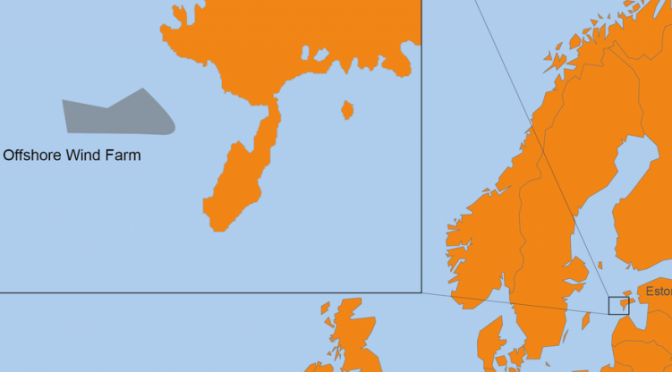Estonia, a small Baltic nation in Northern Europe, has been making significant strides in harnessing the power of the Baltic Sea to generate clean, renewable energy. The country’s wind energy potential is immense, and the government has been actively promoting the development of wind power projects to reduce its dependence on fossil fuels and achieve its ambitious renewable energy targets.
The Baltic Sea, which borders Estonia to the west and north, is characterized by strong and consistent winds, making it an ideal location for wind power generation. According to a study conducted by the European Wind Energy Association, the Baltic Sea has the potential to generate up to 40 percent of the European Union’s total wind energy by 2030. Estonia, with its extensive coastline and favorable wind conditions, is well-positioned to tap into this vast potential and become a major player in the European wind energy market.
The Estonian government has recognized the importance of wind energy in its efforts to transition to a low-carbon economy and achieve energy independence. The country has set a target of generating 50 percent of its electricity from renewable sources by 2030, with wind power expected to play a significant role in meeting this goal. To facilitate the development of wind power projects, the government has introduced a range of incentives and support measures, including feed-in tariffs, grants, and tax exemptions for renewable energy producers.
One of the most promising wind energy projects in Estonia is the development of offshore wind farms in the Baltic Sea. Offshore wind power has several advantages over onshore wind power, including higher wind speeds, more consistent wind patterns, and fewer constraints on the size and scale of wind turbines. In recent years, there has been a surge of interest in offshore wind power projects in Estonia, with several large-scale developments in the pipeline.
One such project is the proposed 600 MW Saaremaa offshore wind farm, which would be located off the coast of Estonia’s largest island, Saaremaa. The project, which is being developed by a consortium of Estonian and international companies, has the potential to generate enough electricity to power around 400,000 households and reduce Estonia’s carbon emissions by up to 1.2 million tons per year. If completed, the Saaremaa offshore wind farm would be one of the largest wind power projects in the Baltic Sea region.
Another notable offshore wind project in Estonia is the Hiiumaa wind farm, which is being developed by the Estonian company Nelja Energia in partnership with the Finnish energy company WPD. The Hiiumaa wind farm, which has a planned capacity of 700 MW, would be located off the coast of Hiiumaa Island and could generate enough electricity to meet the needs of around 470,000 households.
In addition to offshore wind power, Estonia is also exploring the potential of onshore wind energy. The country currently has around 20 onshore wind farms in operation, with a total installed capacity of over 300 MW. These onshore wind farms have already made a significant contribution to Estonia’s renewable energy mix, accounting for around 14 percent of the country’s total electricity generation in 2019.
In conclusion, Estonia’s wind energy potential is vast, and the country is well on its way to harnessing the power of the Baltic Sea to generate clean, renewable energy. With the right policies and investments in place, Estonia could become a leader in the European wind energy market and serve as a model for other countries looking to transition to a low-carbon economy. The development of wind power projects in Estonia not only contributes to the country’s energy independence and climate change mitigation efforts but also has the potential to create new jobs and stimulate economic growth in the region.


